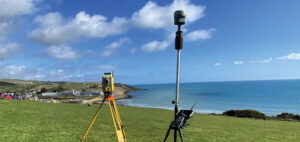The driving force behind Soarvo’s launch? Pure genius and a bit of fire and frustration too. Soarvo have come up with something designed to rescue a geospatial community drowning in much needed, excellent, high-quality data, but restricted in what they can do with it. Think of it as throwing a life belt… but make it a carefully developed revolutionary 3D geospatial platform instead!
Here at KOREC we have a long history in the development of geospatial data platforms. Go right back to the earliest days of GIS in the 90’s and we were there, developing, supporting and working with the very best. So trust us when we say we know a good thing when we see it – and that good thing is Soarvo.
Why’s it different?
The obvious question is what is Soarvo, and the easy answer is of course found in its official description as a “…..revolutionary 3D geospatial data platform, which enables users to Aggregate, Illustrate and Collaborate all in one place.”
That’s exactly what it ‘does’ but what makes it really different is why and how. Let’s go back a couple of years or so when the geospatial industry was spoilt for choice when it came to sensors for generating extremely large, accurate data sets whether that be from mobile mapping, drones or 3D Laser Scanners. The hardware was doing a great job! But what wasn’t so great was what was happening in many offices. Without the mother of all PC’s and a significant investment in multiple software packages, skills and office time, our fantastic, captured data was becoming either a bottle neck holding up projects or simply siloed.
Great data sets aren’t meant to be hidden away, they need to be shared, seen, and collaborated on, not just admired by a select few. That’s why geospatial professionals across all industries – from surveying to rail to mapping – were on the hunt for something that could handle it all and turn those data sets into useful info, fast. But could they find anything? Nope, there wasn’t a single package that could do the job… until now.
Soarvo is born!
The Soarvo aim was to create something with exceptional functionality and security but with a user-friendly interface as inviting as the hugely popular design software, Canva. So, we created Soarvo from the ground up, taking end-user feedback on board at every step of the development process.
And now it’s ready.
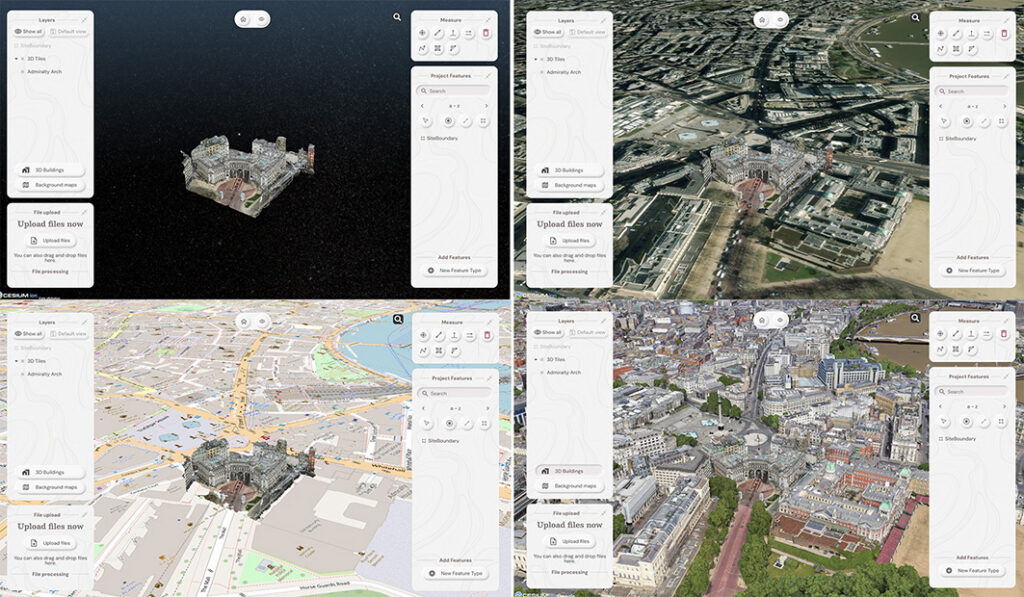
Top left: What you had. Remaining three pictures, adding context with SOARVO
Why it’s exciting? Our top five reasons
It’s extremely easy to use: The development’s been all about the user experience, with an interface built for ease of use. That’s why it looks and feels so different (in the best possible way) compared to other data sharing software out there.
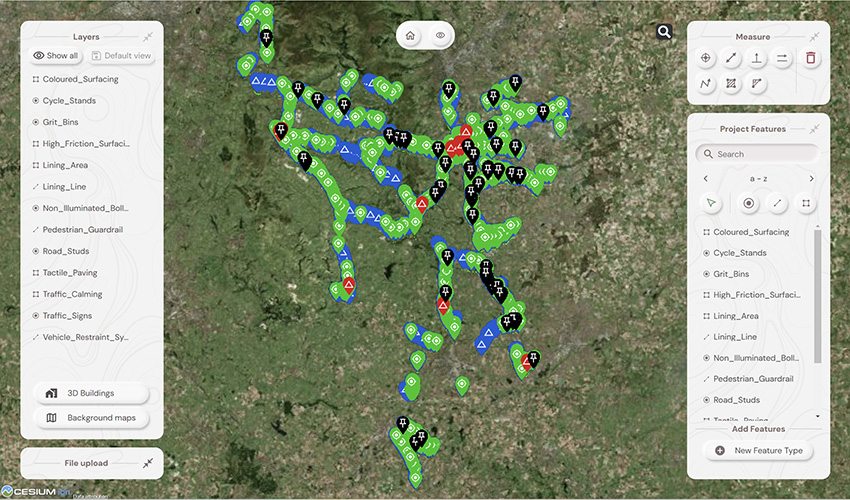
Favourite feature of Paul Brodin, Technical Lead: “The visualisation functionality and the speed with which it loads. I know because I timed it – 15 seconds for a mobile mapping data set that previously took hours!”
It provides a unique view of your data compared to other platforms: Well, how does it do that? The answer is it provides context around your dataset and positions it in the real world. For example, your laser scan point cloud doesn’t sit in a black space, it’s positioned on to the background map of your choice from OS to Google to Bing. This opens up new doors with your clients. It’s all about making your data set relevant for its end users by providing visualisation in a rich 3D environment with analysis and measurement tools thrown in.
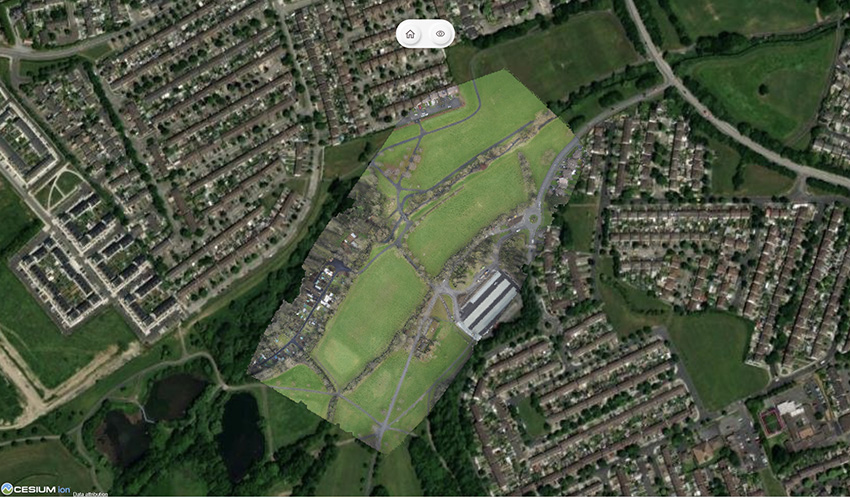
Favourite feature of Alan Browne, CEO and Co-Founder of SOARVO: “It’s all about the effortless processing of drone data – everything included and definitely no fuss required.”
It truly delivers on collaboration: Once your datasets are uploaded, you simply share a secure link to your chosen users and they can log in securely, via the cloud, for viewing or editing depending on their pre-determined rights. We don’t mess about with login limits – invite the whole team if you fancy because the whole point is sharing this information whether it be for visualisation, site planning, measurement, whatever.
Everyone’s invited: As well as unlimited log ins, the software handles data from just about every sensor under the sun, seamlessly combining output from drones, laser scans, GNSS, total stations, mobile mapping, mixed reality, 3D models, CAD and GIS.
It’s a standalone tool for drone data: Capture your aerial data and drop it straight into SOARVO to create your deliverables whether that’s an ortho-mosaic, point cloud, or 3D model. No extra software, no faff—just process, share, and crack on!

Favourite feature of Richard Gauchwin, Senior Product Manager: “For me, it’s all about how it looks and also hearing the amazing reactions from our early access users. As someone who used to be in sales, being able to say ‘yes’ to so many questions just proves we’ve built something genuinely unique here.”
But don’t just take our word for it…
We love feedback and our early access users have provided exactly that:
Soarvo provides us with a platform to automatically process drone orthomosaics and view them within a web-based geospatial data solution. This capability is greatly beneficial to us—having a one-stop shop for all our drone and GIS needs in a single platform is both unique and highly valuable.
The ability to easily share project updates with clients, alongside geospatial and media data, has resolved a long-standing need for us. We now have greater flexibility to share data with contractors and provide updates online, without the need to email GIS files or rely on others to know how to use complex GIS software.
Having a central online location where our team can share data and collaborate easily on projects with online easy to use GIS tools makes workflows and data sharing much more efficient and accessible. Soarvo has provided us with an opportunity to streamline data management within the team.
Ease of navigation in 3D
Speed of rendering large point clouds and ability to move them
Simple clean interface and comprehensive basemap data
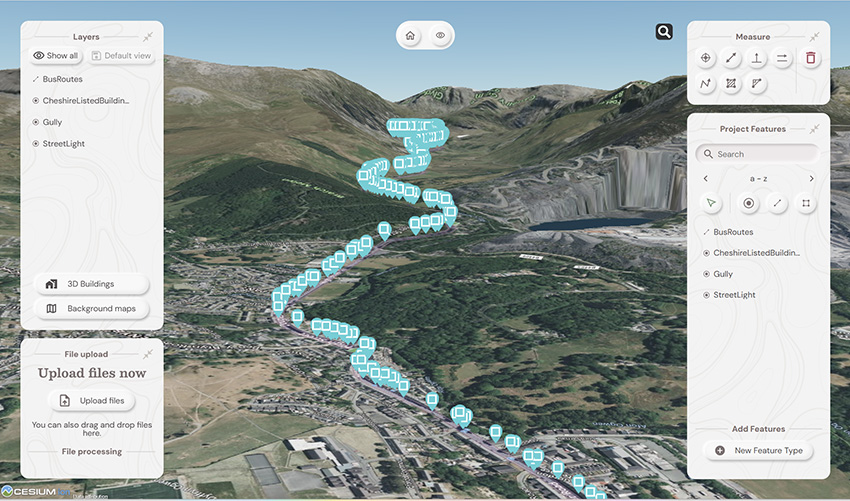
Favourite feature of Gabriel Hradilek, Chief Operating Officer: “A simple one from me, but absolutely massive for our customers: how easy and secure it is to share data. It’s a big deal, trust me!”
Need to know more, contact KOREC
Here at KOREC we’re delighted to be the UK & Irish distribution partner for SOARVO. That means when you get your hands on the new software, you’re also getting over 30 years of our know-how, support, and training – all backed up in our T.R.U.S.T. brand promise. Join the waitlist at https://soarvo.com/
The super deduction tax relief scheme in the UK is coming to an end soon. So, if you’re planning to upgrade your tools of the trade, now would be an excellent time to do so. Read on to discover how the scheme works, who’s eligible, and how much you can claim…
What is the Super Deduction?
Announced by then-Chancellor Rishi Sunak back in the 2021 budget, the super deduction scheme was established to boost investment, productivity and efficiency for UK businesses – especially after the hardship of 2020.
The scheme offers companies the rare opportunity to claim 130% tax relief on new plant and machinery, purchased before 31st March 2023.
Put another way, for every £1 you spend, your taxes are cut by up to 25p.
So, how does it work?
The scheme allows you to claim 130% tax relief on assets purchased before 31st March 2023.
Let’s look at an example.
Let’s say you purchase new kit at a total cost of £100,000.
In that accounting year, you can claim 130% of that figure (i.e. £130,000) from your taxable profits.
Applying 19% corporation tax to that £130,000 figure gives you a tax saving of £24,700
The table below provides a comparison of the Super Deduction with the previous system – as you can see, the tax saving is more than doubled in this example.
| Previous System | Super Deduction |
|---|---|
| A company spends £2m on qualifying assets They deduct £1m using the AIA* in year 1, leaving £1m They then deduct £180,000 using WDAs** at 18% Total deductions in this example are therefore £1.18m Apply Corporation Tax at 19% Equals £224,000 in tax savings Or 11p in every £1 spent | Same company spends £2m on qualifying assets They deduct £2.6m using the 130% rate Super Deduction tax rate Apply Corporation Tax at 19% Equals £494,000 in tax savings or 24.7p in every £1 spent |
*AIA, Annual Investment Allowance, ended December 2021 **WDAs, Writing Down Allowances
What equipment is included?
HM Treasury defines ‘plant and machinery’ as tangible assets that you use in the course of your business – aka, the tools of your trade.
They do not provide an exhaustive list, but examples of these types of assets include;
- Tools such as ladders and drills
- Construction equipment such as excavators, compactors and bulldozers
- Machines such as computers, printers, lathes and planers
In order to qualify, the kit you purchase must be;
- New and unused
- Purchased – not leased
- Not a gift
- Not to be purchased to lease to someone else
Of course, investing in new equipment isn’t just good for your tax affairs – it’s good for productivity too.
Just take a look at this recent example from Casterbridge Land Surveys – after investing in the R12i GNSS solution, they’re experiencing efficiency gains of 30-50% – put another way, they’re saving up to 3 hours – each and every day.
So, if you were looking to invest in some new kit, it’d be well worth making the investment before the 31st March deadline.
Why not complete the form below, for a call back from our friendly team?
Who's eligible?
There are some basic eligibility requirements to qualify for the scheme;
- You incurred the expenditure before 1st April 2023
- You must be a UK registered company, that is subject to corporation tax
- You did not buy the plant or machinery due to a contract you entered into before 3rd March 2021
If you're a sole trader, you can't use the Super Deduction scheme, but there is a simpler scheme you can take advantage of - find out more about this scheme, here
What else do I need to know?
For more information on how the Super Deduction scheme works, take a look at the gov.uk site on Super Deduction - via this link
All information on this page was correct at time of publication - 13 February 2023
Please note that the Super Deduction scheme is only available to UK companies - businesses should consult their professional tax adviser for full details of the scheme
Over the coming weeks, we’re going to be asking prominent people in the survey industry to outline their three most rated geospatial industry innovations/changes in around 100 words or so…and anything goes!
We’ll be sharing these thoughts on LinkedIn and have some great names lined up!
We’ll be adding each addition to our ‘Insider Series’ to the KOREC blog to build up a picture of what those in the know really rate.
Polly Hopkins, Company Secretary of Storm Geomatics, specialists in surveying in water
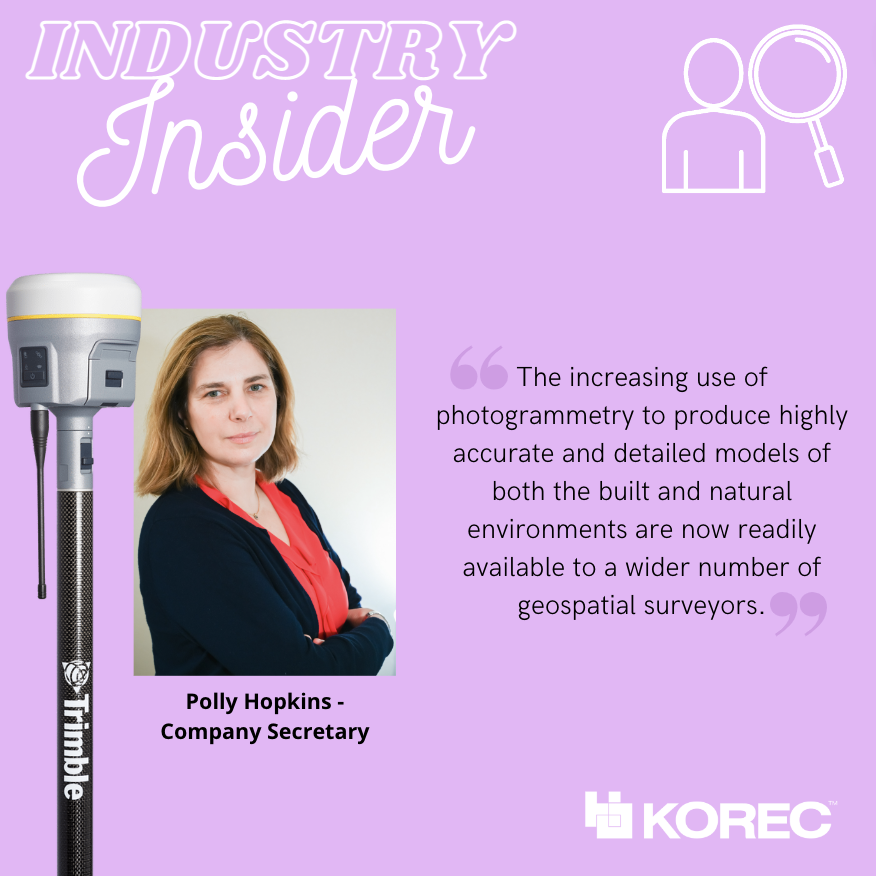
Polly has been with Storm Geomatics since day 1! Her expertise lies in understanding and researching Storm Geomatic’s clients’ pain points, then ensuring that her colleagues address these by providing solutions through the best methods of data capture.
Polly’s three most rated innovations/changes:
The increasing use of photogrammetry to produce highly accurate and detailed models of both the built and natural environments are now readily available to a wider number of geospatial surveyors. The increased use of photogrammetry is possible because of:
Increasing power and memory storage of computers too process large volumes of data and media that compliments data capture capabilities and processing. Such as photogrammetry.
Software innovation focusing on being specific to client needs to accelerate the process of problem solving. For example, GeoRiver® River Channel processing software that is a result of collaboration between Storm Geomatics and engineer clients to produce an understanding of specific requirements to solve flood solutions.
To conclude; photogrammetry, the power of the computer and functionality of software are all innovations that will greatly enhance geospatial data capture and ensure processing of data is accelerating the process of problem solving.
Ron Bisio, Senior Vice President at Trimble, with responsibility for the Geospatial and Transportation sectors
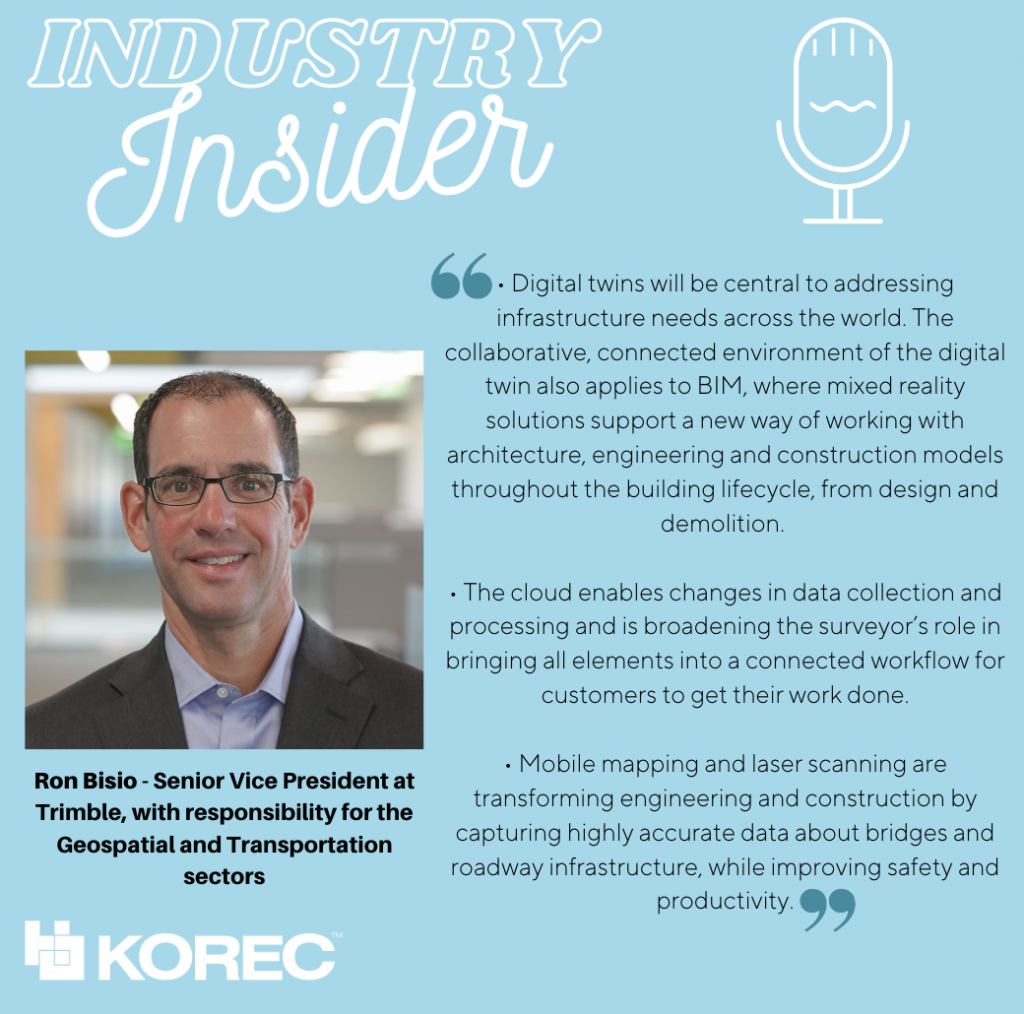
Ron joined the company in 1996 and has held several marketing, sales and general management positions prior to taking over worldwide responsibility for Trimble Geospatial in 2015. He earned a master’s degree in business administration from the University of Denver, a master’s in regional planning from the University of Massachusetts and an undergraduate degree in geographic information systems & cartography from Salem State University in Salem, Mass.
Ron’s three most rated geospatial industry innovations/changes
• Digital twins will be central to addressing infrastructure needs across the world. The collaborative, connected environment of the digital twin also applies to BIM, where mixed reality solutions support a new way of working with architecture, engineering and construction models throughout the building lifecycle, from design and demolition.
• The cloud enables changes in data collection and processing and is broadening the surveyor’s role in bringing all elements into a connected workflow for customers to get their work done.
• Mobile mapping and laser scanning are transforming engineering and construction by capturing highly accurate data about bridges and roadway infrastructure, while improving safety and productivity.
Gavin Schrock, Licensed land surveyor and consulting editor of GoGeomatics

Gavin Schrock is also a practicing, licensed land surveyor, technology writer, administrator of a cooperative real-time GNSS network (RTN) and consulting editor of GoGeomatics. He has worked in surveying, mapping, geodesy, monitoring, data management, satellite navigation, and GIS in public works, commercial development, defense, and utilities. @schrockg
Gavin’s four most rated geospatial industry innovations/changes
• Practical Augmented Reality for Construction and Surveying
The face-box AR systems, like we see promoted in consumer markets, were never going to be practical—or safe—for field or worksite environments. The realisation of true “mixed reality” was long overdue for AEC applications; I’d been waiting for this for decades, ever since I saw those heads-up displays in fighter aircraft and thought “why can’t we have this in the field?” Then along came the Trimble XR10 in 2019, based on the HoloLens 2, later productized as for construction layout earlier this year, powered by the FieldLink MR application. The future just got quite bit closer. Ok Trimble, now give us a tilt-prims-pole to go with it!
• Cobots for Surveying
Sure, we are long way from full-on robots as field crews, but the benefits or automation, particularly to boost productivity and reduce common sources of error are already being realised with “cobotics” instruments. A “cobot” is often defined as “a computer-controlled robotic device designed to assist a person”. A prime example in surveying is advanced scanners like the X7 that self-calibrate, perform automated fine levelling, and progressively self-register multiple scans. Another is the robotic platforms, like the surveying robo-dogs (and follow-along equipment pods) that take their cues from their human party chief/coach. Expect to see robotic total stations and UAS get a bit more “coboty” in the near future.
• The Time to Upgrade Your Survey GNSS is Now
It’s good move to help firms keep up with the present more-work-than-they-can-handle situation. But also, in this tight job market, the latest kit can help attract and retain staff. GNSS rovers have undergone a dramatic leap forward just in the past few years with the Galileo and Beidou constellations reaching full complement in 2020. Rover manufacturers had to boost processing power and completely revamp RTK engines, like in the R12, to fully leverage an expanded slate of modernized signals. There have been noticeable gains in speed, multipath mitigation, ability to work in sky-view-challenged environments—not to mention sensor integration like no-calibration tilt.
• Pay-as-you-go High Precision GNSS
A unique combination of GNSS hardware and software-as-a-service (SaaS) provides very affordable high-precision—on an as-needed basis. Late last year, I got to test-drive the Trimble DA2/Catalyst system, and found that under most conditions, it performed just as well as a high-end surveying rover. With a small investment in an antenna, you use credits to essentially “rent” the high precision receiver/RTK engine. Perfect for those with occasional or seasonal needs or seeking to outfit a large team for a term project. In 2017, the first generation of Catalyst demonstrated that software-defined-GNSS-receivers were practical; this latest gen system improves the user experience, better leverages multiple constellations.
The annual extravaganza that is the Eurovision Song Contest takes place this Saturday, as twenty-four European nations (and, erm, Australia!) compete to take home the trophy.
Now, you may be asking what this has to do with KOREC – very much a UK & Irish based organisation!
Well, besides the fact that Ireland have won the competition more times than anyone else (ahem, seven times!) it turns out that we as a company have European connections all over the shop.
So, to unashamedly jump on the bandwagon, here’s our rundown of KOREC’s Euro-connections across the water…
UK & Ireland
Starting from home, the UK and Ireland are obviously our home nations, with 2 offices in the UK and 1 in Dublin. We also have staff located up and down the country from the tip of Cornwall to the wilds of Northumberland, and everywhere in between. In Eurovision terms, we certainly bat above the average – Ireland won an incredible four times in the 1990s, whilst the UK was last victorious 25 years ago – Katrina and the Waves, anyone?

Sweden
Nothing says Eurovision like Sweden, and for most people it conjures up ABBA’s 1975 triumph with ‘Waterloo’ – which took place right here in Brighton, UK!
Less people may know that Sweden is also home to the SX10 and SX12, the Danderyd facility just outside of Stockholm. A number of lucky KOREC customers had a visit to the high-tech facility back in 2019 to see the incredible technology behind the laser scanning total station.
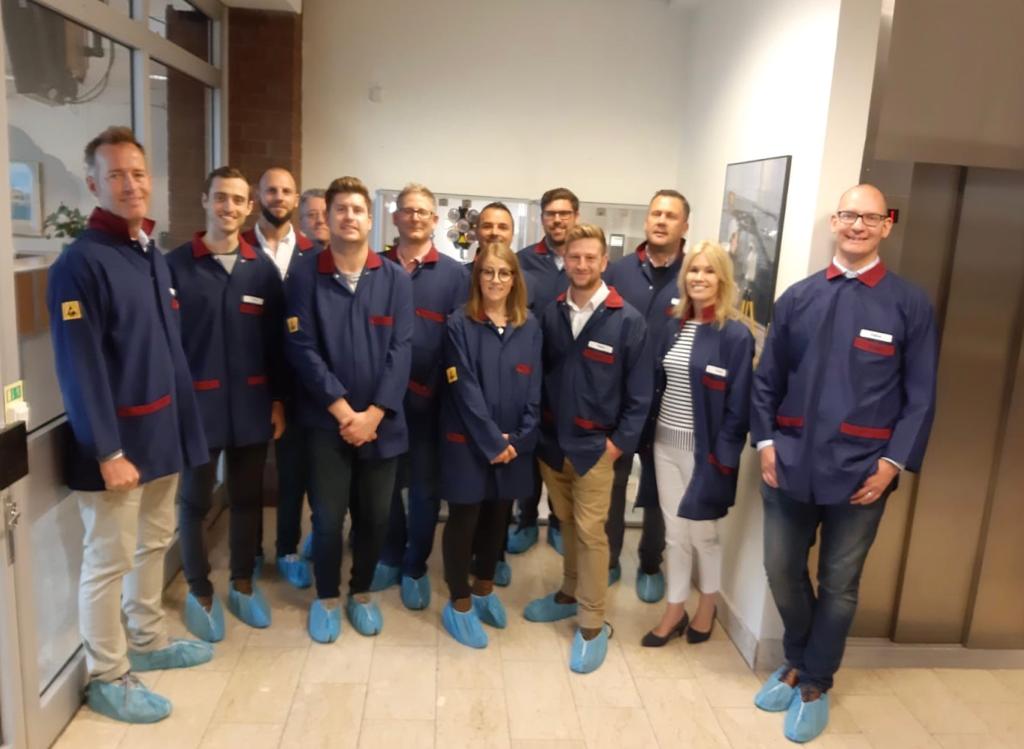
Read more on this amazing facility in this write-up by Gavin Schrock in xyht magazine
Germany
As well as being one of the Eurovision ‘Big 5’ (countries that get an automatic entry thanks to their financial support) Germany is also a major player when it comes to Trimble. The nation is home not only to Trimble Rail, but also Trimble Mobile Mapping. In fact, as we speak, the KOREC Rail team are all in Germany alongside their counterparts from other Trimble dealers across the continent.
The sleepy town of Biberach, southern Germany is the rather unexpected home of Trimble’s cutting edge, mobile mapping solutions – the MX9 and MX50 – and was the venue for another one of our customer experiences in 2019!

Switzerland
Our next nation is just a short flight across the Alps which, appropriately enough, is the home of drone manufacturer senseFly. Headquartered besides the beautiful Lake Leman, senseFly have been creating robust, lightweight, market-leading drones since 2009, and KOREC have proudly partnered with them pretty much since day one.
The eBeeX is probably their most well-known drone, here it is in action with recent converts, Jacobs;
And the Rest…
As well as being home to many of our partners, a huge number of our European friends have decided to make their home right here in the UK and Ireland. Amongst our colleagues at Trimble and KOREC, we are proud to have representatives from Spain, Portugal, Norway, Hungary, Croatia, and Greece.
And whilst Trimble is of course an American company, in a European singing competition which features Australia, who knows what could happen?
Wherever you’re from and wherever you are now, we hope you have a cracking weekend and enjoy the show!
The final of the Eurovision song contest takes place this Saturday, 14th May from 8pm
This Monday may be a bank holiday, but this year another holiday is taking place on the same day. Eid al-Fitr (festival of breaking the fast) will be celebrated by Muslims all around the world as the month of Ramadan comes to an end.
But what is Ramadan? Here, KOREC’s Digital Marketing Apprentice Ikra Taj educates us on Ramadan, and what it means to her.
Ramadan is the ninth month in the Islamic calendar and every year the start date varies and is decided at the sighting of the moon. It is a religious ceremony that marks the 30 days in which the Quran (Holy book of Islam) was revealed to our last prophet. This month is possibly the most anticipated month of the Islamic calendar; a month that Muslims across the globe yearn and crave to see again. During Ramadan Muslims spend an entire month fasting from sunset to sunrise, this means we cannot eat or drink anything from sunset to sunrise. Aside from fasting Ramadan is a time for spiritual reflection, to help those in need and to spend time with loved ones.
Every year I often get asked the same questions around fasting. There’s always the interest of how we observe this sacred month and then there’s the shock of how intense the requirements of fasting are:
“So you can’t eat anything from sunset to sunrise?!”
“Not even water?!”
“I could never do that!”
I understand it does sound pretty full on but the reality is Ramadan is doable and so rewarding. It is even scientifically proven that intermittent fasting has multiple health benefits. However, we don’t fast because God wants us to starve, instead it’s a time to empty our stomachs and feed our souls.
Fasting is compulsory for all Muslims although there are some exemptions, some are exempt from fasting due to illnesses, pregnancy or old age. In these cases, If the individual is not able to make up these fasts at a later date, they must feed one poor person for each fast missed.
Ramadan is something I’ve always observed since a young age. For me it is a time of quiet reflection and self-discipline; I like to pray, recite the Quran and give extra charity during this month to better myself and improve my character. It’s also a time where I am conscious of my actions more so than on a typical day as I want to be rewarded by God for the good I do in this month.
In my younger years Ramadan for me often used to be a challenge, all I thought about was food and often I spent my days counting down the hours to sunset so I could eat. Luckily this has changed! As I’ve grown older I normally overcome the effects of fasting within the first few days, the body does adjust fairly fast and although I miss my guilty pleasures the feeling of fasting makes me so much happier.
Instead of having food on my mind I make the effort to spend more time with my family, prepare meals for my loved ones and increase my remembrance of God. Working from home also has its benefits as I am able to preserve my energy by not traveling or walking around much. It also helps when working in an environment where those around you care and help you through this month, the little things like getting checked up on by work colleagues during my working day always brings a smile to my face and makes this month that much more amazing. So a special thank you to Stuart and Harriet who have looked after me well and been so understanding, I appreciate you!
As a small cake business owner my days are always busy with a high influx of orders coming in, from everyone wanting to gift their friends and family edible gifts to celebrate Ramadan. I love this part, as my spare time is spent doing what I love and bringing smiles to faces.
So the question remains why do we fast in Ramadan?
Firstly, it is one of the pillars of Islam (obligatory acts Muslims must carry out). The Quran also states those who believe must fast. Fasting has been a way of those way before us and its intention is to make us more conscious of our Lord. When we see our physical intake of blessings i.e. food being taken away from us we instantly become more mindful of who bestowed those blessings upon us. This makes us grateful and In turn helps us live positively and do good. As well as withholding food we must stay away from using bad language, smoking, immoral acts and anger.
When a Muslim predecessor once asked “why is fasting instituted?” It was replied by “so that the rich will taste hunger and thus will not forget the hungry”. Through the experience of fasting we gain a greater depth of understanding for those who have little or no food, this helps us to have more empathy. Therefore, during Ramadan Muslims push to be charitable by donating to charities and feeding the less fortunate.
What may surprise some is that Muslims enjoy Ramadan so much that they grieve when it comes to an end. We come to the realisation that true happiness is in feeding the soul and being satisfied with your sustenance, that prayer is better than sleep and that charity is better than consumption.

Last month we said goodbye to one of our longest-serving employees – and in doing so closed a chapter of KOREC’s history.
When Group Financial Controller Helen Palmer (nee Walsh) decided to ‘hang up her abacus’ after 22 years in the business, there ended the last connection to the original founders of Survey Supplies.
A Little History Lesson
Survey Supplies was founded in Liverpool by father and son, George and Graham Walsh in 1967. As with many family enterprises, Helen Walsh, Graham’s daughter and George’s granddaughter, was roped in to assist – working in the finance department as a teenager during her summer holidays.
Helen clearly caught the bug – heading to university to study Maths with statistics, and then training as a Chartered Accountant with a firm in Liverpool.

In 1999 Helen returned to the finance department at Survey Supplies. When Survey Supplies Ireland was established– a brand new enterprise for the company, Helen was tasked with the accounting functions.
One of the most significant changes came in 2005 when current CEO Alan Browne purchased Survey Supplies, and rebranded the organisation to KOREC. Although clearly a significant change for Helen, she confesses that these later years have been the ones she will look back on most fondly.
A Fond Farewell
Never one to miss out on a party, Helen made the decision to retire at the tail end of 2021 – giving the KOREC team plenty of time to plan her farewell party.
The team didn’t disappoint. A night out at Bongo’s Bingo (bingo – but not as you know it!) was enjoyed by the Liverpool office team, although Helen was gutted not to take home the glitterball helmet…
A rather more sedate party was held in the Liverpool office, where the team enjoyed a buffet feast (thank you Rachel!) and an absolutely giant cake, which Helen ceremoniously cut.
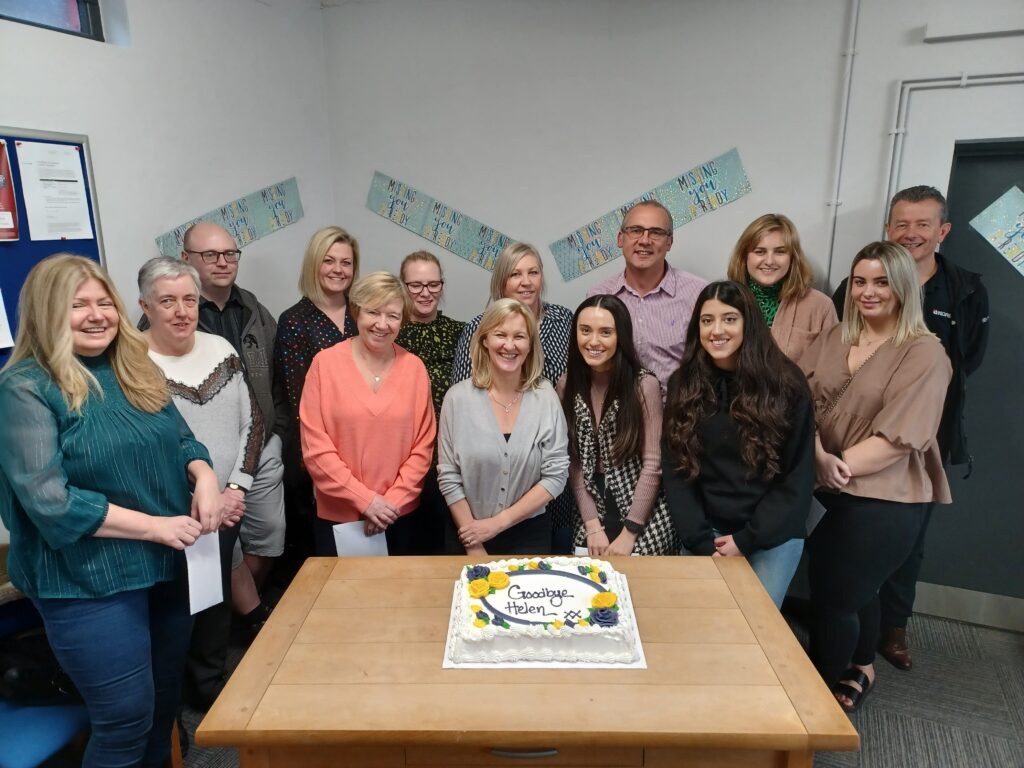
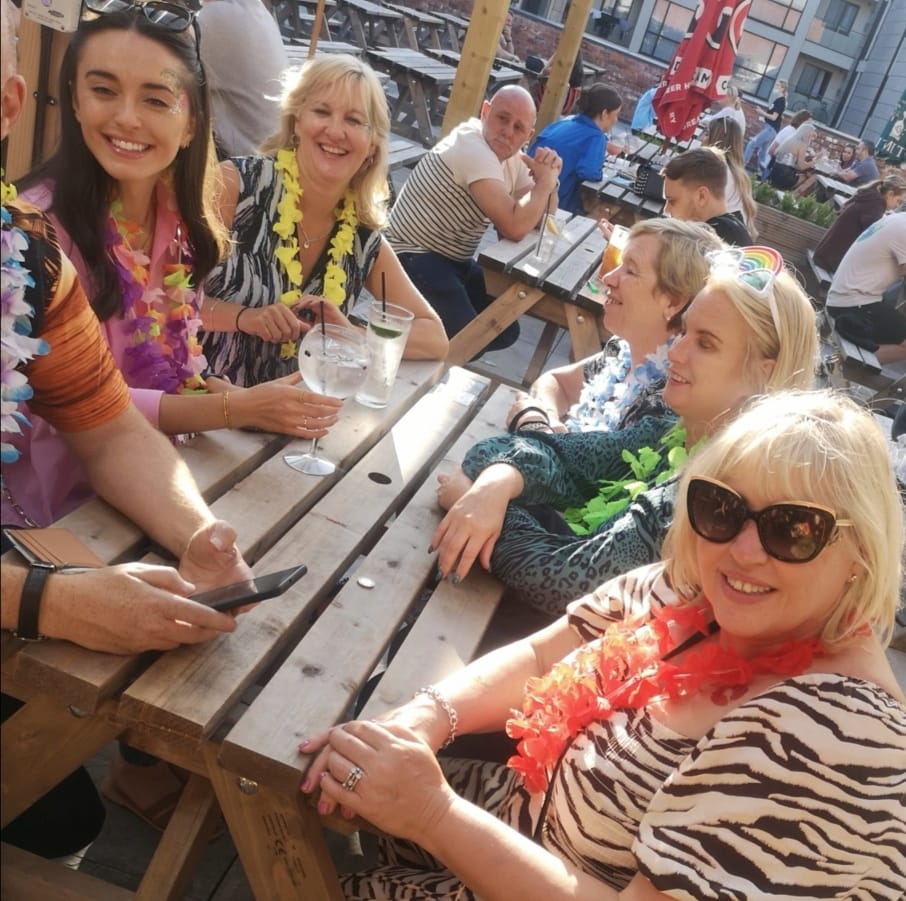
Helen will be greatly missed by all who worked with her – not least Finance Director David Hodkinson who singled out her ‘fantastic work and dedication’ during their 16 years as colleagues.
Happily, Helen is based just up the road from the Crosby office, so we expect to be seeing Helen and getting regular updates on her latest golf handicap / caravan holiday escapades!
From all of us at KOREC, we thank you Helen and wish you many happy years on the golf course!
Our third ‘Hidden Figure’ of October was a true pioneer in not one but two fields – the football pitch and the fields of war – and has just entered the Hall of Fame at the National Football Museum
Walter Tull seemed to face adversity at every step of his short but eventful life. Walter, along with his brother Edward, was left orphaned at just nine years of age after his mother died of breast cancer and his father of a heart attack. The two young boys were moved from their native Folkstone to a children’s home in Bethnal Green.
It was here that Walter’s love and talent for the beautiful game first became apparent, and at the age of 20 he was signed for local amateur club Clapton FC – one of the first black players in English football. Reports were Walter never played a losing game, and was called the “catch of the season” by the Football Star.
Fame came calling just a year later when Walter signed for Tottenham as inside forward. During his short time with the club, Walter endured horrific racial abuse at the hands of the opposing fans. Newspaper reports of the time state that, despite being abused with language “lower than Billingsgate [market]”, Walter remained, at all times, a true professional;

“He is Hotspur’s most brainy forward … so clean in mind and method as to be a model for all white men who play football … Tull was the best forward on the field.”
Walter’s life took a very different turn with the outbreak of the Great war in 1914. He wasted little time in enlisting, joining the ‘Footballer’s Battalion’ (what else?) of the Middlesex Regiment in December 1914. He fought extensively in the war including on the Italian and Western fronts, and at the battle of the Somme. His “gallantry and coolness” helped him climb the ranks, becoming a second lieutenant in 1917 – one of the first mixed-heritage men to become an officer in the British Army, and the first black man to command white troops.
Walter’s life was cut tragically short on 25th March 1918 in northern France, during a German offensive. He was just 29 years old. When notifying of his death, his commanding officer recommended Walter for a Military Cross – for his gallantry and brave service.
Despite never receiving the award he clearly deserved, today Walter has been recognised for his contribution to the beautiful game. This week he was posthumously entered into football’s Hall of Fame, in a ceremony at the National Football Museum, Manchester.
Former Tottenham defender Ledley King, who was at the ceremony, described Walter as a “true inspiration – to me and for every black footballer who has come through since”

Sources for this blog;
https://www.bbc.co.uk/sport/football/43504448
https://www.bbc.co.uk/sport/football/58992003
https://en.wikipedia.org/wiki/Walter_Tull
Marking the second in our ‘Hidden Figures’ series is a look at the woman who has just topped the 2022 Powerlist – Microsoft CDO Jacky Wright
First published in 2007, The Powerlist is a list of the top 100 most influential people of African or African Caribbean heritage working in the UK. Famous recent winners have included the author Malorie Blackman, Brexit activist Gina Miller, and last year’s winner, Formula 1 driver Sir Lewis Hamilton.
2022’s winner is admittedly less of a household name – Microsoft Chief Digital Officer Jacky Wright.
We did a little research to find out more about Jacky and her background – and how she explains her business philosophy in her own words.
Jacky was born in Jamaica, her parents part of the Windrush generation that came to the UK in search of a better quality of life for their families. Her father served in the Royal Air Force and distilled in Jacky the belief that, through striving and hard work, she could truly be and do anything she wished.
Hear Jacky in her own words in this BBC interview:
Jacky has spent much of her working life in the US, with senior positions at major multinationals such as BP, General Electric and Anderson Consulting. But she returned to the UK in 2017 for a two-year stint overseeing the transformation of HMRC to a truly modern, digital organisation.
Clearly, Jacky does not shy away from a challenge. The ongoing transformation of the UK’s tax body is fundamental shift – involving the relocation of 65,000+ employees into 13 regional UK hubs by 2025.
At the same time, the government had set itself the challenge of becoming the UK’s most diverse employer by 2020. For Jacky, these two challenges, at first seemingly separate, are at the heart one and the same.
“Becoming a more diverse environment is not just about making government a better workplace. It is also about enabling government to work better: you can more effectively serve the breadth of the citizenry if your workforce is composed of a similarly broad cross-section”
For Jacky, if organisations such as HMRC are to truly modernise, decentralise and better reflect contemporary working practices, it is vital that the people making the decisions best represent UK society as a whole.
“I want my team to be an inclusive team from all walks of life, because then we can best address problems. Diversity informs me like it should inform anything that anyone does…We’ve got to understand the citizens, because we have to make sure they are able to interact with us – no matter who they are, what walks of life they are from, or whether they have disabilities. And, in order to do that, I’ve got to think broadly.”
We think we can learn a lot from Jacky’s ethos, in how we continue to build modern, forward-thinking and inclusive organisations.
Congratulations to Jacky on topping the Powerlist – we don’t think we’ve heard the last of her!
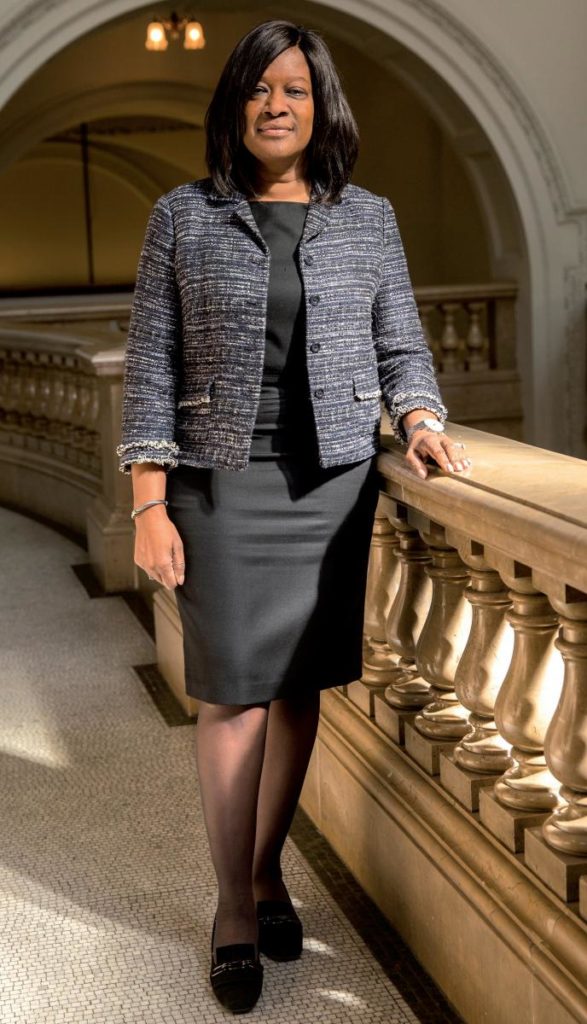
Sources for this blog;
https://www.bbc.co.uk/news/av/business-58890913
The 1960 Rome Olympics introduced the world to a boxing superstar named Cassius Clay, better known perhaps as Muhammad Ali. But it’s a lesser known gold medal winner from that games who’s the star of our first ‘Hidden Figures’
Wilma Rudolph took home no less than 3 gold medals for athletics in 1960, namely the 100m, 200m and 4 x100m relay. An impressive feat in itself, but even more impressive when you understand Wilma’s background.
The twentieth of 22 siblings, Wilma was born in 1940 in Clarksville, Tennessee. She was born premature, weighing just 4.5 pounds. She suffered from multiple illnesses in her childhood, including pneumonia, scarlet fever and polio – which left her lame in her left leg and foot. Medical care for African-Americans was in short supply in Clarkesville, so Wilma and her mother Blanche were forced to make a weekly bus journey some 50 miles to the largely-black medical centre in Nashville, for treatment. This continued for 2 long years, until Wilma regained the use of her leg, by the time she was 12 years old.
Wilma’s athletic talents were spotted at high school, where she soon earned the nickname ‘Skeeter’ due to her speed. At the tender age of 16, and the youngest member of the squad, Wilma travelled across the globe to the Melbourne Summer Olympics, where she brought home bronze in the 4 x 100m relay.
Four years later in Rome, Wilma competed in 3 events, winning gold in all 3 – becoming the first American woman to win three golds in a single Olympics. In sometimes scorching temperatures of 110F (43C), Wilma was inspired by another American sprinter – Jesse Owens, her inspiration from the infamous 1936 games in Berlin.
Whilst her victories had her cast as America’s ‘leading lady’, Wilma returned home to a very divided nation. When Clarksville celebrated ‘Welcome Wilma Day’ to celebrate her achievements, Wilma used her new-found fame to insist that the event be fully integrated between black and white people – the first fully integrated event in the city’s history.
Wilma retired from running age 22, feeling she had reached the heights of her Olympic career. In her own words; “I’ll stick with the glory I’ve already won, like Jesse Owens did in 1936”
Perhaps Wilma thought her fame was required elsewhere. As well as gaining a degree in education in 1963, Wilma spent over a month in west Africa as a US goodwill ambassador. On her return, she took part in a civil rights protest in Clarkesville to desegregate the city’s restaurants. Within weeks, all of the city’s restaurants, as well as public facilities, became fully integrated between black and white people.

No doubt the childhood memory of those weekly 50 mile bus rides to a ‘black’ hospital were high in Wilma’s mind – with a determination that no other young black child would have to endure the same hardships.
October in the UK marks Black History Month, and for the second year, here at KOREC we are taking part.
Last year, we asked our people to tell us who had inspired them, or left a positive impact on their life. As well as some personal connections, some notable names such as Nelson Mandela and Barack Obama were cited as inspirational figures.
As a contrast, this year, we are taking our lead from these quotations from BHM editor Catherine Ross, and Minister of State for Equalities, Kemi Badenoch;
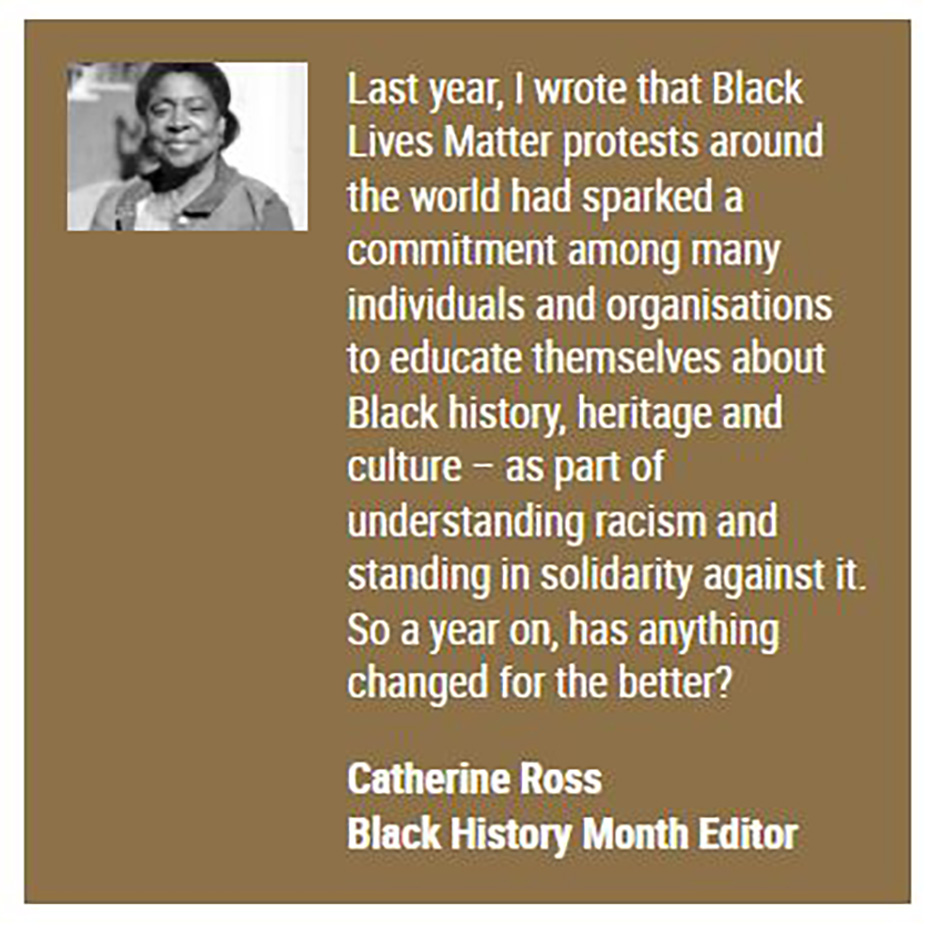
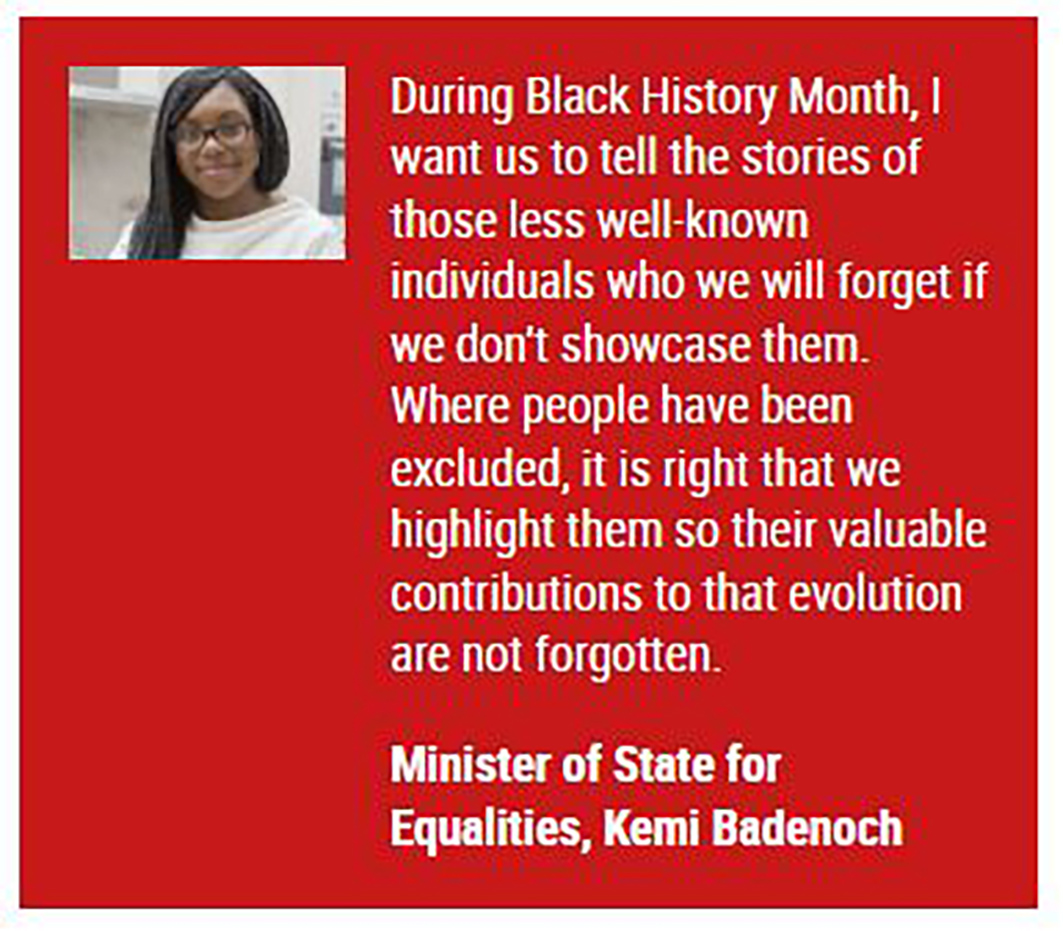
“Because black history is British history“
Dawn Butler MP (first female African-Caribbean minister to speak at the dispatch box)
Hidden Figures
Throughout the month, we’ll be focussing on some lesser known black figures from throughout history. The aim is to not only highlight people who have changed the course of history, but to educate ourselves on who these people were, the times they lived in, the challenges they faced – and the contributions they made to society.
So instead of familiar names, we’ll be talking about some lesser known (or even hidden) figures from throughout history – so if the names Wilma Rudolph, Ignatius Sancho, Mary Seacole, Harriet Tubman or Katherine Johnson don’t mean much right now, we hope that come October 31st we’ll all have learnt a little more.
After all, as this timeline shows – the black history of Britain is far from recent…



